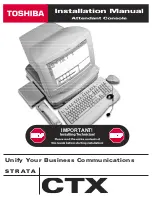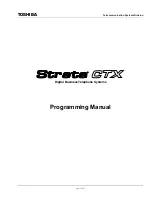
45
USING THE
GL4000
FOR FRONT-OF-HOUSE (FOH)
The console is positioned within the listening area so that the sound fed to the audience
can be accurately balanced and controlled. In larger systems the performers monitors
may be controlled from a separate console positioned at the side of the stage (on-stage
monitor). Where this is not possible the monitors are controlled from the FOH console.
You may also be required to provide separate recording, broadcast and zone feeds,
and even record the show for the performers.
This application demonstrates the versatility of the
GL4000
. Here, the console controls
a LCR + delay fill speaker system, stage monitors, stereo broadcast feed, with 2-track
and multitrack recording. Signal processing devices such as effects and graphic EQ
are shown inserted.
T
HE
I
MPORTANCE
OF
I
NSERTS
ON
THE
O
UTPUTS
A graphic equaliser is inserted into each of the main L,R and M outputs to adjust for the
natural acoustic resonances which can colour the sound and result in troublesome
acoustic feedback. Inserting these rather than plugging them between the console
outputs and amplifier inputs gives two advantages:
1. The long cable runs can be driven from the console balanced XLR outputs
without signal loss and interference pickup. Many lower cost graphics do not
have this drive capability.
2. You can monitor the effect of the graphic using
AFL
.
T
HE
M
AIN
L
EFT
, C
ENTRE
, R
IGHT
(LCR) O
UTPUTS
Most sound systems use speaker stacks positioned left and right of the stage. Larger
systems and many fixed theatre systems include a mono stack hung centrally above
stage front. Here, the main sound source such as vocals is sent to the mono stack while
music and effects may be sent to LR. The stereo image is usually kept narrow for the
benefit of the audience positioned closer to one of the speaker stacks.
Use group
PAN
to control the stereo image to LR.
Use
LR to MONO
to mix some LR to the mono output to get the best balance
between the speakers.
T
HE
LR D
ELAY
F
ILLS
In larger venues additional 'fill' speakers are positioned nearer to the audience seated
furthest from the stage. In a theatre these may feed the raised balcony. The intention
is to improve clarity without distracting the audience from the source of the sound itself.
Because of the distances involved the acoustic delay between the originating sound
source and the fill speakers becomes obvious to the listener as a distracting delay
(around 1millisecond per foot). It is also important to EQ the sound to prevent
distraction, usually by removing some LF and HF. In some cases you may wish to send
a different mix from LR to the fill speakers. The
GL4000
offers two ways of controlling
fills :
1. Use the
MATRIX
outputs if you want the fill mix to be different to the LR mix.
Select
#
OUT REV
for balanced XLR output and inserts, or
2. Use the
LR2
outputs with
POST
selected so that the fills follow the LR faders.
Here, the balance between the main speakers and fills is set using the LR2 output
level trims. Select
#
OUT REV
for XLR and inserts. Patch a stereo delay unit
and graphic EQ into the inserts. Adjust these to remove the audible delay at the
listening position, and to EQ for least distracting effect. Use
AFL
to check the
effect of the inserted equipment.









































